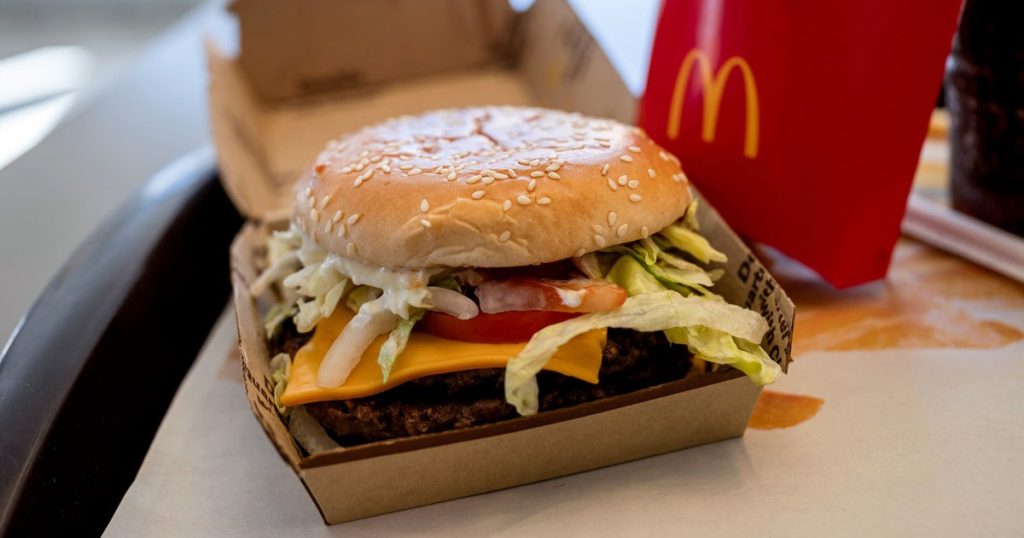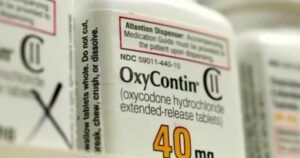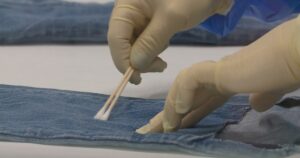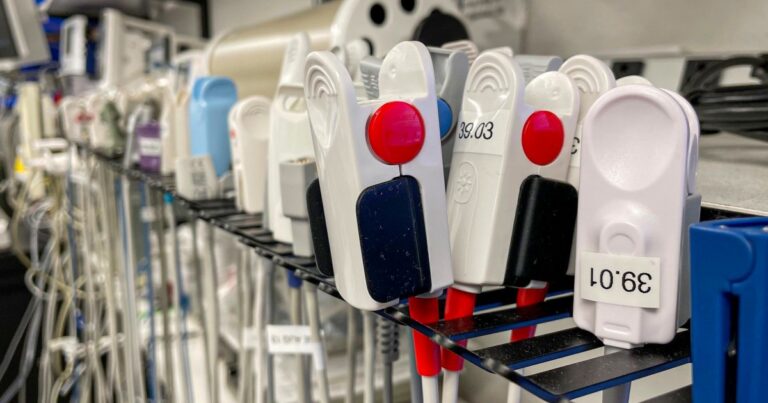
In one of the early reports to the Centers for Disease Control and Prevention in what would later lead to a recall of McDonald’s Quarter Pounders in several states, a 61-year-old man from Wisconsin said he got sick after eating the hamburger with onions that he said he didn’t order.
“Patient reported that he ordered the Quarter Pounder without onions and was angry because it came with them on it,” according to the Oct. 21 patient report. The man ate the burger, onions included, the report said, when he was passing through a Colorado airport during a layover Sept. 29.
He later tested positive for E. coli O157:H7, a particularly nasty strain of the bacteria that can cause severe kidney problems.
In another report, a 76-year-old woman in Colorado got sick Oct. 5 and needed to be hospitalized. She reported eating an Egg McMuffin, fries and a Quarter Pounder from McDonald’s. Another day, she said, she had a ceasar salad and salmon and rice at other restaurants. She also tested positive for the E. coli strain.
And a 16-year-old boy in Colorado who reported eating at McDonald’s “most days and typically orders a Quarter Pounder or cheeseburger at each meal” got sick with E. coli O157:H7 on Sept. 29, according to his patient report. The teen said he also had a “Dr. Pepper, milk shake, bite of McChicken” at McDonald’s. Another day, a “bbq sandwich and fries” at a different restaurant.
The reports, along with 80 others, were provided to NBC News through a Freedom of Information Act request. They encompass nearly all of the reports the CDC received as it investigated a growing E. coli outbreak that the agency would eventually link to slivered onions served on McDonald’s Quarter Pounders in 14 states and connected to 104 illnesses, including one death. The CDC redacted all personal information from the reports, which were submitted to the agency by health care providers and state health officials who were investigating foodborne illness outbreaks in their own states.
The outbreak led McDonald’s to temporarily stop serving its Quarter Pounders in several states. At the same time, a Colorado onion supplier recalled its yellow onions in response to the outbreak.
On Tuesday, the CDC declared the outbreak over. No new cases have been detected since Oct. 21.
A McDonald’s spokesperson referred NBC News to a statement it published on its website Nov. 14, which said that the FDA said “there does not appear to be a continued food safety concern related to this outbreak at McDonald’s restaurants.”
Ben Chapman, a food safety specialist and head of agricultural and human sciences at North Carolina State University, said that the CDC and the FDA did “a good job” managing the McDonald’s outbreak, adding they acted “very quickly” to identify a product early and link it to the Quarter Pounders.
“They then updated the public when they identified onions as the most likely source,” he said. “I think that was very helpful and everything seemed to happen relatively quick.”
The CDC documents provided to NBC News offer a peek into the detective work as the agency’s investigators, alongside state health officials, raced to identify the cause and get the outbreak under control.
“A lot of ill people”
Matt Wise, chief of the CDC’s Outbreak Response and Prevention Branch, said Colorado health officials alerted the agency to an increase in E. coli infections in the state Oct. 10.
Those health officials, Wise said, gave the first crucial clue. “They were at that point seeing that a lot of ill people were reporting eating at McDonald’s,” he said.
That information was gleaned from interviews that state and local health officials in Colorado did with patients. “They’ll ask about foods and where people eat and stuff,” he said.
Five days later, on Oct. 15, the CDC got DNA results back from Colorado, which showed that infections were linked, Wise said. The results also confirmed that there were illnesses in other states, and the CDC opened up a multistate investigation, he said.
At that point, the CDC worked with Colorado to develop a more detailed questionnaire to distribute to suspected patients.
The questionnaire asked about the foods they remembered eating, whether their meals included ingredients such as tomatoes, pickles, lettuce or onions, and if they made any substitutions to meals ordered at restaurants. It also asked if they ate at McDonald’s and had the Quarter Pounder, with or without onions.
Determining the root cause of a foodborne illness outbreak is “really tough and very difficult work,” said Marion Nestle, professor emerita of nutrition, food studies and public health at New York University.
“It’s really, really hard to figure it out, because they have to ask everybody what they ate,” she said. “Who remembers what they ate? Nobody does.”
While all the reports detailed confirmed cases in the outbreak, not everyone remembered eating a Quarter Pounder. One report from a 20-year-old man from Utah who went to McDonald’s and other restaurants listed “Veggie pizza (veggie lover? Ultimate veggie pizza?),” along with seven other recent meals he had, including “Bowl with chicken and onion” and “chicken biscuit breakfast sandwich,” but no Quarter Pounder made his list.
As the CDC was working with state health officials and sending out questionnaires, it was simultaneously working with McDonald’s. On Oct. 16, the CDC had its first call with the restaurant chain.
“We really kind of buttoned down that there was a specific association with Quarter Pounders on Saturday, the 19th,” Wise said.
Slivered onions
The CDC announced the outbreak Oct. 22. At that point, there were 49 cases spread across 10 states. Ten people had been hospitalized, including a child, and one person had died.
The same day, McDonald’s said it was pulling its quarter-pound beef patties — exclusively served on the Quarter Pounders — from its menus in the affected states. Taylor Farms, which supplied the slivered onions, also announced a recall of its yellow onions sent to McDonald’s and other restaurants.
On Oct. 28, health officials ruled out the beef patties served on the Quarter Pounders as a potential source of the E. coli.
“The least likely possibility is the meat, because it’s cooked and the number of outbreaks from meat has gone way down since the 1990s when food safety rules were put in place,” Nestle said. “So, it’s probably vegetables of some kind. And the question is: which ones?”
That left only a few ingredients as a possible source. It wasn’t the pickles, lettuce or tomatoes, because these ingredients were served on other menu items at McDonald’s, and people were only getting sick from the Quarter Pounder, not items such as the classic hamburger or the Big Mac, which also can come with pickles, lettuce or tomatoes.
That left the fresh, slivered onions as the likely source. Other burgers and sandwiches at McDonald’s use rehydrated diced onions.
Both the CDC and the FDA have concluded that the slivered onions were the likely source of the E. coli.
In a statement Monday, Rachel Molatore, a spokesperson for Taylor Farms, said: “After extensive testing by regulatory agencies and independent labs, no evidence of the E. coli O157:H7 outbreak strain has been found in any of our processed onion products, our onion raw product supply or in our facility in Colorado.”
A spokesperson at the FDA said in a statement Monday that the slivered onions “are the likely source of this outbreak” even though lab testing hasn’t matched the recalled onions to the outbreak strain or illnesses.
Nestle said the health agencies may never be able to definitively prove the onions as the source.
“That package of onions is long gone,” she said.













